Lecce and surroundings
What to see in Lecce and surroundings
Four fried trousers set on a bench overlooking an amphitheatre and the visit to the city of Lecce began, a jewel of the Apulian region reached last summer. A city where the main character is the baroque built on the iridescent shades of Lecce stone, which lights up with shades and golden reflections at the first ray of sunshine.
To act as a trailblazer to the visit we find the amphitheatre of the city, a Roman monument built between the first and second century A. D. still used as a location for shows and theatrical performances. A jewel of art to admire and preserve.
Entering the old town centre, you can walk with a glance captured by the beauty of the city and head up there to admire the inlays of elegant municipal palaces, the richly finished balconies and, in the alleys, the spectacular stairways and hidden courtyards.
The city is full of incredible charm and it is enough that a lady looks out from a terrace to find herself admiring a scene of everyday life that seems painted.
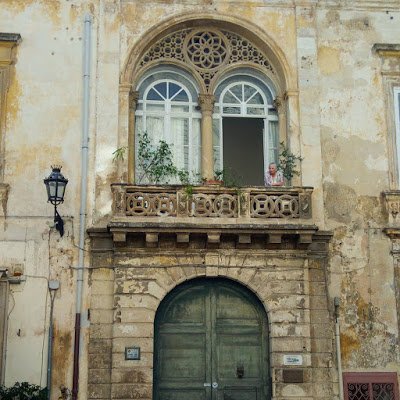
The streets lead to the Duomo, Porta Napoli, treasures of inestimable value, curious and unusual museums.
The old town centre is also a flourishing of shops selling pottery, small local businesses and realities with decades-old stories that in many cities would already have disappeared. It's a pleasure to cross similar activities between alley and alley, seeing that you can still give value to historic shops and the beauty of individuality.
Lecce is full of museums, there is only the embarrassment of choice. I myself come from a city where Jewish culture is integrated and present and I have been captured by the history of Palazzo Taurino and its location in the Jewish quarter. Today it is a cultural center where thanks to guided tours you can discover the remains of the ancient city and learn the customs and customs of medieval Giudecca. You can also see the remains of the church in which the synagogue was converted following the expulsion of the Jews from the city, the mezuzah compartment (usually hanging on the door jambs are containers that contain the Shema, a fundamental prayer of Judaism) and the places for the ritual ablutions still present (mikvaot).
Two other museums that I had marked myself on the notebook were the Railway Museum and the Cartapesta Museum. The first exhibits a vast collection of locomotives, rolling stock and memorabilia that tell the story of Apulian railway history, the second tells the art of papier-mâché and its indissoluble bond with Lecce and Salento. I didn't do it in time to visit them but I leave them as pure inspiration.
Leaving the city, you can reach the castle and explore its surroundings. In the report of the itinerary in camper van I have recommended dozens of attractions in the surroundings of Lecce and more in general in Salento and also in this post I indicate you two that are easily integrated with this itinerary. The first straight is to turn on the engines of the car and reach the Turkish Bay. Wonderful and regenerating dive into its crystal clear waters after walking for hours in the old town centre under the sun.
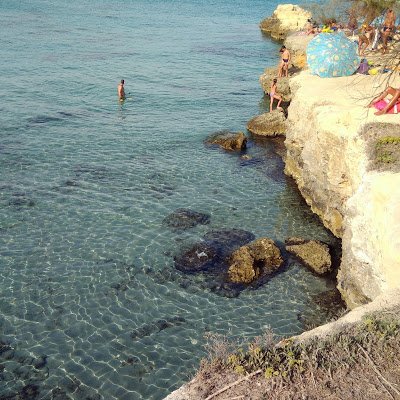
I do not recommend the nearby Grotta della Poesia (Poetry Cave), but for a mere matter of timetables: if you plan to visit this famous pearl of Salento, reach it in the very first hours of the morning when there is no living soul or from a heavenly place it will turn into an infernal wind.
If you do so in time for sunset, I suggest that you leave the Turkish Bay and reach in not even twenty minutes the southernmost point of the region (Santa Maria di Leuca) that culminates with the splendid lighthouse and the sanctuary of Santa Maria de Finibus Terrae. A final stop where you can breathe the air and beauty of Salento.
Paolo Virzì - Ella & John, The Leisure Seeker | Travel film
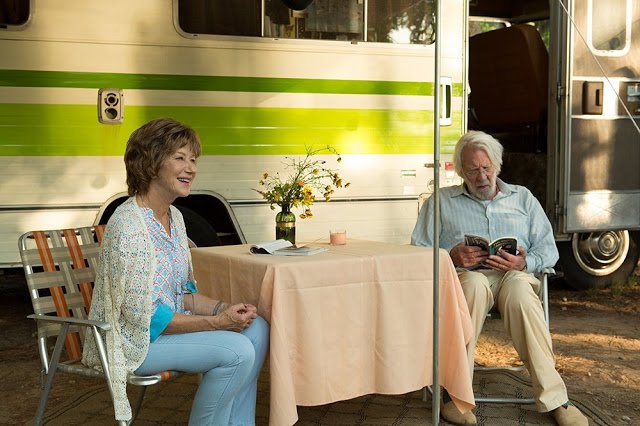
Paolo Virzì is one of my favourite directors. His films represent today's society in a terribly authentic way. The sweet and bitterness of life is narrated without pindaric flights, in a realistic way and without false finals. Feelings and events are mixed in a powerful centrifuge where they rotate unceasingly and in orderly scattered dramas, loves, tragedies, tragedies, laughter, disappointments, bitterness, blessings, follies. Virzì's characters and films, even though they represent more or less common existences/events, have unique traits: they celebrate lights and shadows of life, show the extraordinary nature of daily choices and how they can influence the development of the entire existence or part of it, as in the case of Ella and John.
She cries out loud and clear the will to be free in determining her own destiny. Cancer sufferer, with no chance of healing, could heal himself until the end of his days in the safe bed of a nursing home, but why close himself in between four walls when there is more time to live? Why should we support the paranoia and worries of children who would like to see her and her husband John, Alzheimer's sufferer, constantly forgotten and lost in her chaotic memories, slippers, surrounded by diapers and disinfected shelves of a nursing home?
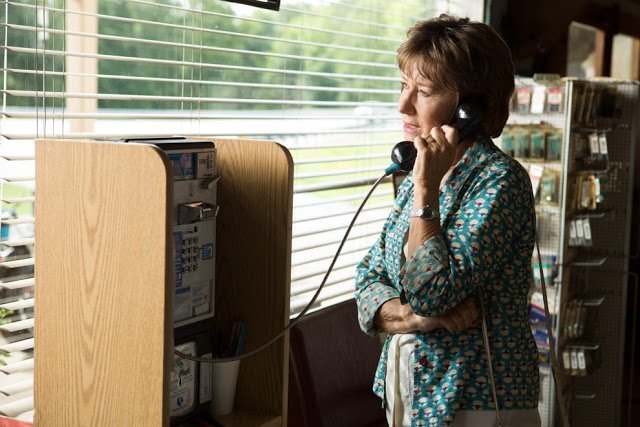
The final point of life is death, not old age, and if it is true that life must be lived to the end it is better not to think in a conventional way, to put the bursting family scrap back on the road and leave for a new adventure on the road.
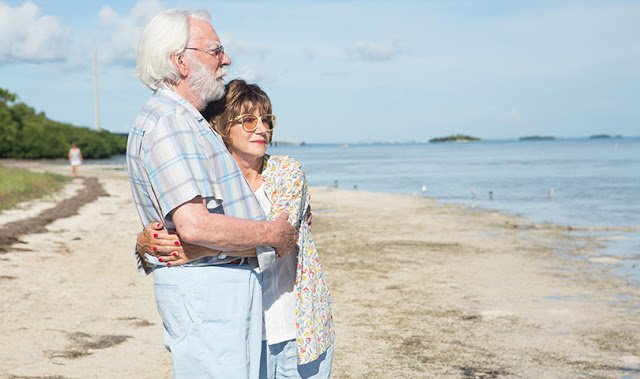
Taking care would also mean separating oneself from John and this is not possible. They are one the lifeblood of the other, their love prevents any external interference. The aim is therefore to leave and take the Old Route 1 to Key West, Florida, to reach the holiday resorts that lived with children in the seventies. Children who are now too intrusive, too anxious, too concerned about observing the data in their medical records.
You will understand well how this film has become part of the personal list of films to see in these first hints of 2018. There are the United States, there is a four-wheeled means of transport, there is a road to travel, there is boundless love and perhaps there is a small dose of Livorno... even if it remains hidden behind the ciak.
I don't want to anticipate too much, I don't even want to dwell on the plot. I prefer to leave you readers to Travel Beyond the pleasure of discovering this film where you cry and laugh following the vicissitudes of the two protagonists. I can only tell you that there is a lot to learn from Ella and John. What is true love, what it means to take care of the other, how to deal with the vicissitudes of life with a sip of whisky, a wig and a smile... go and see this wonderful film.
**Livorno: the places of Romanzo Familiar **
The initials, almost hypnotic, of Romanzo Famigliare and the narrating voice of Vanni (Mark Messeri) accompanied these cold Monday and Tuesday in January introducing the events of the Liège Family and the other protagonists of the series. Romanzo Famigliare is a fiction that I followed until the last episode to discover the fate of Emma and Micol and to admire my beautiful city of Livorno brought on the small screen. The Jewish origins of the Liège family are the first of many links to the history of the city, indissolubly linked to the Jewish community since the sixteenth century, thanks to the strategic safe-conduct issued by the Grand Duke of Tuscany Ferdinando I de' Medici (Le Livornine) that allowed the Jews to escape persecution in Spain and Portugal and move to live and trade freely in Livorno.
The fiction directed by Francesca Archibugi, is unfortunately finished but we can relive it with a tour of the film: an exploratory walk in the city with suggestions and interesting anecdotes to visit along the way. As always, I insert real and feasible routes: I think it's useless to provide you with a list of 20-30 locations to explore all together.
Let's start from the Venice Quarter where the house of Denise, Emma's childhood friend, is symbolically located. After an affectionate welcome on the seafront, she turns her back and betrays her trust forever. Augustine, Emma and other characters of the series will travel through these streets several times prey to thoughts, reflections, feelings of guilt. Among the many angles are frequently shown the bridges of Via Borra overlooking the Scali del Refugio, the Scali delle Pietre (the seat of the restaurant where Ivan works) and the Scali degli Isolotti.
In addition to this charming area of the city in search of the places of Romanzo Famigliare, dedicated to time to admire the beautiful views of the old town, the Church of Santa Caterina and the water channels where burgeoning boats depart or return from the sea greeting the rocky companions of pier. Those who wish can also explore the Venice district on board a boat thanks to the association "Livorno in Battello" which for years has been delighting visitors with its interesting trips along the ditches. Venice is ultimately a magical neighborhood, an evocative picture of popular life where the words of Curzio Malaparte in Maledetti Toscani resound stronger than ever before:
"If you were a Leghornese
of the true ones who say de
and speak openly by moving their fingers,
how to show that in their words there is no cheat,
I'd like to stay at some Venice Airport.
Not already in the neighborhoods, in the squares,
in the streets drawn with a sweet pencil,
with the help of team and compass
by the ordered and generous architects of the Grand Dukes,
but in this neighborhood that Livorno call La Venezia,
From the Venice district you return to Via Grande reaching the port, the statue of the 4 Moors, symbol of the city and the dock stairs that in Romanzo Famigliare were frequently used as a location for shooting.
If you happen in the morning they will welcome you with screams of hungry seagulls and festive fishermen intent on selling the fish of the day.
Turn right, at the two small kiosks on the roundabout, cross the French Bridge and, from the Andana degli Ringelli, continue on your left to the drawbridge that overlooks the Darsena Nuova. Do you remember nothing about this ups and downs?
Parking on Viale Italia you can discover other places of Romanzo Famigliare: the splendid Mascagni Terrace to travel along and wide with the lighthouse of Livorno in the distance, the establishments of the Pancaldi Baths where in the fiction Micol falls in water rescued by Ivan and, shortly afterwards, the White Baracchina and the first of the gates that open the guarded borders of the Naval Academy.
On the way from the Bagni Pancaldi to the Baracchina Bianca you will recognize one of the points where Emma walks with Denise. Walking you'll meet people of all ages, from elderly people reading the newspaper or leading the dog to official (true) students who want to relax on licence days. The waterfront of Livorno is a bustle of people and lives, an eternal stage where you don't hear any "ciak, motor, action! Life goes on air as it is, just sit down and watch it from a bench.
Continuing on, the green and yellow grilles of the Naval Academy of Livorno rise up, in the fiction work place of Agostino and home of the apartment where he lives together with Emma and Micol. In the film you can admire the interiors and some entrances that give onto tree-lined avenues such as the one next to Barriera Margherita, which in the film corresponds to the entrance where the van loaded with the furniture of the Pagnotta family's removal passes.
In everyday reality, the Naval Academy of Livorno is placed under close military surveillance. Normally it is not possible to access it except for the open days (Open Day) during which it is possible to visit the classrooms and the spectacular Arms Square where the sails of the Brigantino stand out. If you happen to enter during an open day, it is absolutely worth it.
Nicola (my husband) was one of the many official students of the Naval Academy and actually lived in the same classrooms, dormitories and corridors in the series. Imagine his emotion as you relive those precious memories. Almost below the photo of his Oath, in a cold 4th December 2002, the day of Santa Barbara patron saint of the Navy.
At this point if you are good walkers, you reach another location of the series on the seafront: the Hotel Universal, in Antignano, a place where Emma lunch with Giorgio, the love of youth "forgotten".
Here too the seafront triumphs with the romantic Staircase of Antignano, the tamarisk cliffs and the profiles of the islands of the Tuscan Archipelago that appear as mirages on the horizon.
From the avenue of Antignano we proceed in the hill, towards Montenero, to find a location of Romanzo Famigliare, where is ideally placed the residence of the Cavalier Gianpietro Liege: it is Via Byron where you can admire the sea and the city from a spectacular perspective.
The residence of the Cavalier Liège is actually the beautiful Villa Abegg, an imposing Tuscan-style residence located near Turin.
Going down Via Byron you can reach the Sanctuary of Our Lady of Montenero, sacred place to all Leghorn people, and catapult in its atmosphere of spirituality and recollection, along corridors completely covered with ex-vote left by the faithful as a sign of thanksgiving for being miraculous by terrible accidents or heavy storms.